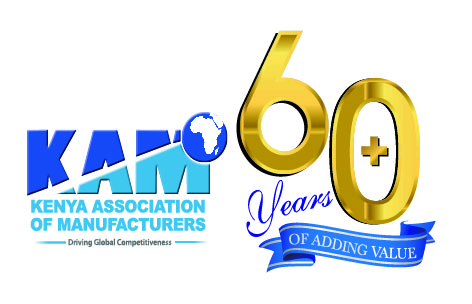Manufacturing Outlook 2025: Charting the path to Kenya’s industrial success
Thursday, 27th March 2025, Nairobi: Kenya’s manufacturing sector is at a pivotal point, with both emerging opportunities and existing challenges shaping its future. The Manufacturing Outlook 2025 paints a clear picture of the current landscape; highlighting the sector’s potential to drive economic growth, job creation, and industrial transformation. However, high production costs, policy uncertainties, and underutilized market opportunities continue to slow progress.
In response, Kenya Association of Manufacturers (KAM) has launched the Manufacturing Priority Agenda (MPA) 2025, a strategic roadmap designed to strengthen local industries, enhance global competitiveness, and create a more predictable business environment. Kenya’s industrial sector remains a key driver of economic progress, but growth has been tempered by factors such as rising operational costs and market access limitations.
KAM Board Chairperson, Jane Karuku reaffirmed KAM’s commitment to driving sustainable industrialization for national prosperity. “At KAM, our purpose is to create prosperity for the nation through sustainable industrialization. This means advocating for policies that empower manufacturers, strengthen local industries, and create jobs. We also need to encourage our own consumption through Buy Kenya, Build Kenya. The younger generation is already showing enthusiasm for locally made products, and we want to build on this momentum. These MPAs serve as crucial roadmaps, guiding policies, supporting MSMEs, and ensuring local industries scale up effectively.”
KAM Chief Executive, Tobias Alando called for intentionality in policy reforms to enhance the sector’s global competitiveness. “We must be deliberate about creating a predictable tax environment that fosters business growth. Our focus should be on export competitiveness, SME development, and a regulatory framework that supports industrial expansion.”
Kenya’s geographic position offers significant advantages for regional and international trade, yet intra-African trade remains relatively low. Dr. Juma Mukhwana, Principal Secretary, State Department of Industry, noted that, “Intra-Africa trade accounts for only 15%, which means we continue to rely heavily on external markets. At the same time, China is manufacturing ten times more than the entire African continent. While we are making progress in opening markets, it is equally important to ensure that our industries are equipped to meet this demand.”
Cabinet Secretary, Ministry of Investments, Trade, and Industry, Hon. Lee Kinyanjui, highlighted the need for collaborative solutions to longstanding barriers. “Energy costs remain a significant concern, and it is important to explore ways of making manufacturing more competitive. Additionally, we need to reassess multiple levies imposed at the county level to ease the cost burden on industries. A balanced approach to taxation, one that considers long-term industrial growth, will be key to unlocking the sector’s full potential.”
As Kenya navigates the manufacturing landscape in 2025, all stakeholders—government, industry players, and development partners; need to work together to ensure sustained growth. Countries like Vietnam and China have demonstrated that with the right policies, investment in industrial capacity, and a united effort, manufacturing can become a major driver of economic transformation. Kenya has the potential to follow suit, but success will depend on bold, coordinated action to propel the sector forward.
Looking for elevation? KAM lifts you up.
- Direct technical assistance
- Capacity building programmes
- Networking and mentorship
- Industry insights & analysis
- Trade & export development services
